 |
 |
 |
| |
Almost Half of Atlanta MSM Will Use PrEP, But HIV Risk Perception Often Faulty - Willingness to Use Pre-exposure Prophylaxis (PrEP) among black and white MSM in Atlanta, GA
|
| |
| |
IDWeek 2016, October 26-30, 2016, New Orleans
Mark Mascolini
Almost half of 482 Atlanta men who have sex with men (MSM) reported willingness to try PrEP, and recent condom-free anal sex emerged as the only factor independently linked to PrEP interest [1]. But substantial proportions of men who saw their own "low risk behavior" as a reason for shunning PrEP in fact had recent condomless anal sex or had HIV or a sexually transmitted infection (STI) diagnosed during the study period.
Emory University researchers who conducted this study noted that Atlanta had the fifth highest HIV diagnosis rate in the United States in 2013, and three quarters of these diagnoses resulted from sexual transmission between men. Research showed that 18- to 24-year-old black MSM had the highest cumulative HIV incidence in 2010-2014 (16.4%), when compared with older black MSM and white MSM. Among men who picked up HIV and had sufficient behavioral data, 71% met CDC PrEP eligibility criteria.
The investigators hypothesized that reasons for or against starting PrEP may differ between black and white MSM because of their differences in HIV incidence, sociodemographic factors, and healthcare access. To test that hypothesis, they conducted a cross-sectional analysis of MSM participating in an Emory cohort study in 2010-2014. During that time, men completed a survey on willingness to use PrEP and motivators or barriers to PrEP use.
The Atlanta study focused on 219 black MSM and 263 white MSM. The black group included a higher proportion younger than 26 (55% versus 34%, P = 0.004), a higher proportion with high school education or less (25% versus 8%, P= 0.0004), a higher proportion with annual income below $30,000 (65% versus 41%, P < 0.0001), a higher proportion with no insurance (43% versus 23%, P < 0.0001), and a lower proportion of recent substance users (28% versus 50%, P < 0.0001).
Compared with white MSM, black MSM had a lower rate of condomless anal sex in the past 12 months (65% versus 76%, P = 0.007), a higher rate of a new STI diagnosis (38% versus 19%, P < 0.0001), and a marginally higher rate of new HIV infection (5.9% versus 2.7%, P = 0.07). About three quarters of both black and white men had an HIV test in the past year.
Among these Atlanta MSM, 45% of both blacks and whites expressed willingness to take PrEP. In multivariate analysis that willingness did not differ by race, insurance status, or new HIV or STI diagnoses. But condom-free anal sex in the past 12 months was associated with 70% higher odds of willingness to use PrEP (adjusted odds ratio 1.7, 95% confidence interval 1.1 to 2.7).
A marginally higher proportion of white men than black men listed having condomless anal sex as a reason for willingness to try PrEP (62% versus 48%, P = 0.13). Significantly larger proportions of white than black MSM said they would start PrEP if a doctor recommended it (45% versus 22%, P = 0.002) or if a counselor or other healthcare worker recommended it (39% versus 21%, P = 0.012).
Among reasons for unwillingness to start PrEP, white men were more likely than blacks to cite their partner not having HIV (33% versus 11%, P < 0.0001), not wanting to take medications every day (42% versus 29%%, P = 0.038), and not wanting to go to the doctor every 3 months (25% versus 7%, P= 0.0003). Compared with white MSM, blacks were more likely to cite not being sexually active as a reason for unwillingness to start PrEP (17% versus 8%, P = 0.017).
Among 137 men who listed their own low HIV risk behavior as a reason for unwillingness to start PrEP, 77 (56%) reported condomless anal sex in the last 12 months and 39 (28.5%) got diagnosed with HIV or an STI during the study period. A significantly higher proportion of black MSM than white MSM said they would use PrEP only if it were free (26% versus 18%, P = 0.03). But overall most men said they would try PrEP if it cost less than $50 per month.
The investigators believe concerns over daily pill taking "support the need for different PrEP options," such as long-acting injected PrEP. The notable discordance between perceived and actual HIV risk, the Emory team stressed, points to a need for "formal population-specific risk assessment tools which combine risk behavior assessment with local epidemiologic risk."
Reference
1. Rolle CP, Rosenberg ES, Luisi N, et al. Willingness to use pre-exposure prophylaxis among black and white men who have sex with men in Atlanta, Georgia. IDWeek 2016, October 26-30, 2016, New Orleans. Abstract 2380.

Willingness to Use Pre-exposure Prophylaxis (PrEP) among black and white MSM in Atlanta, GA
Reported by Jules Levn
ID Week Oct 26-30 New Orleans
Charlotte-Paige Rolle, MD MPH, Eli S. Rosenberg, PhD, Nicole Luisi, MS, MPH, Jeremy Grey, PhD, Travis Sanchez, MPH, Carlos Del Rio, MD, FIDSA, John L. Peterson, PhD, Paula M. Frew, PhD, Patrick Sullivan, DVM, PhD and Colleen Kelley, MD, MPH

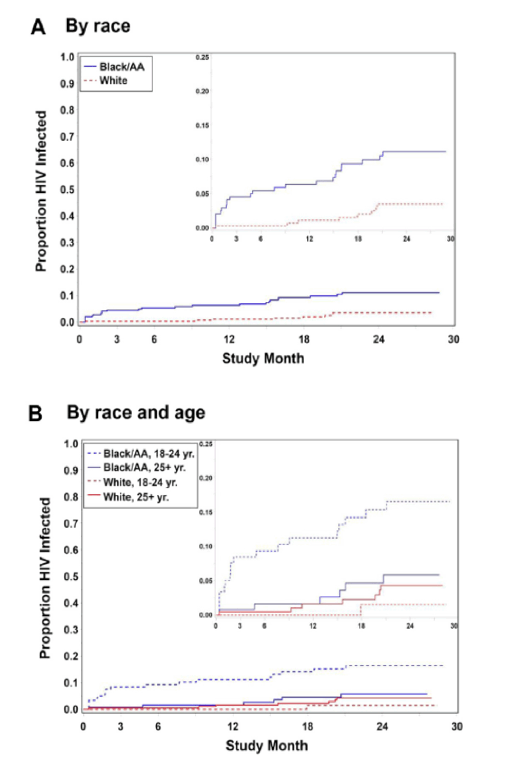
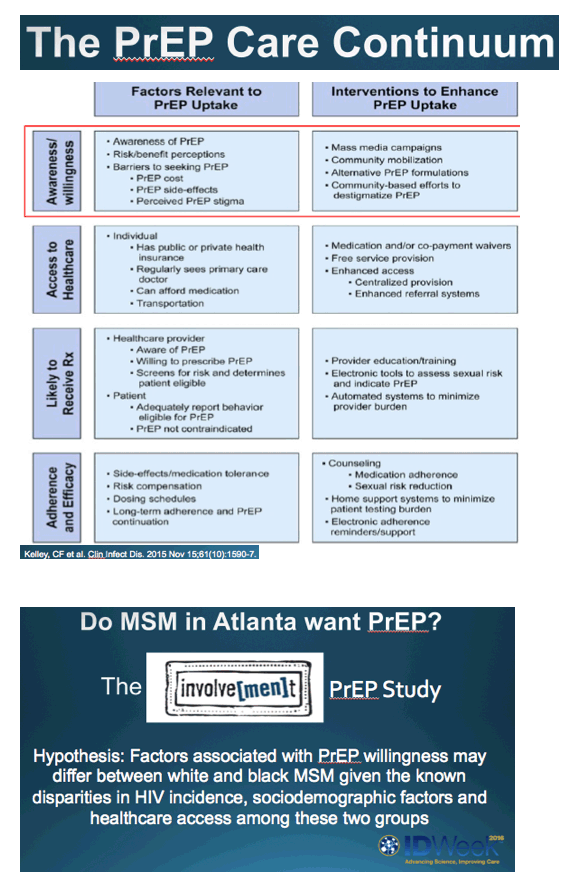
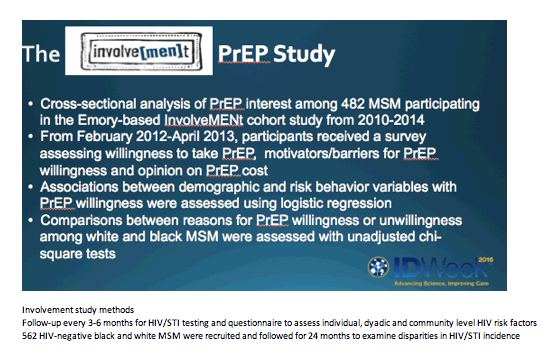
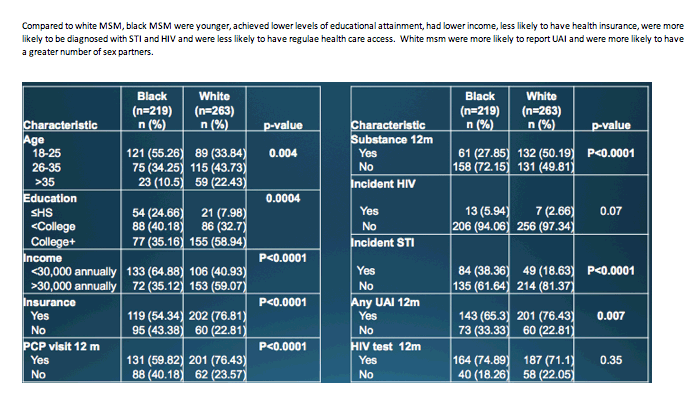
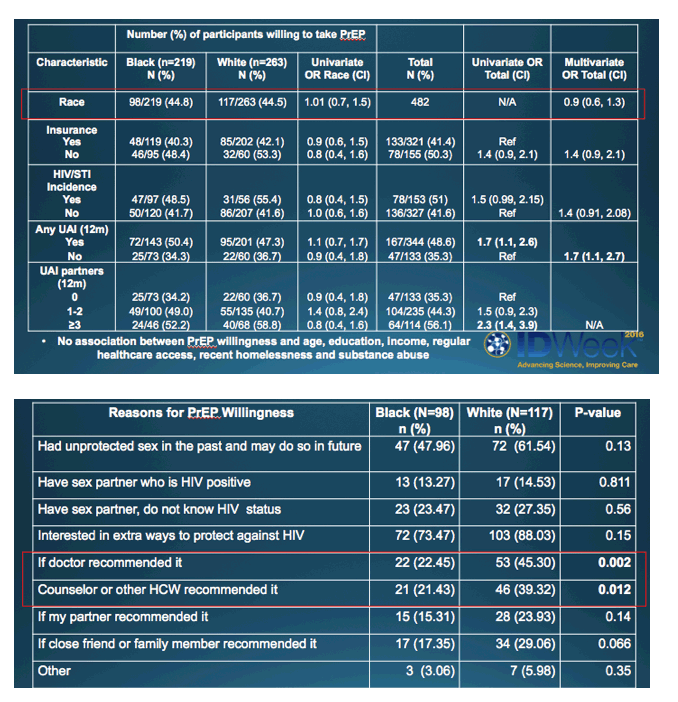
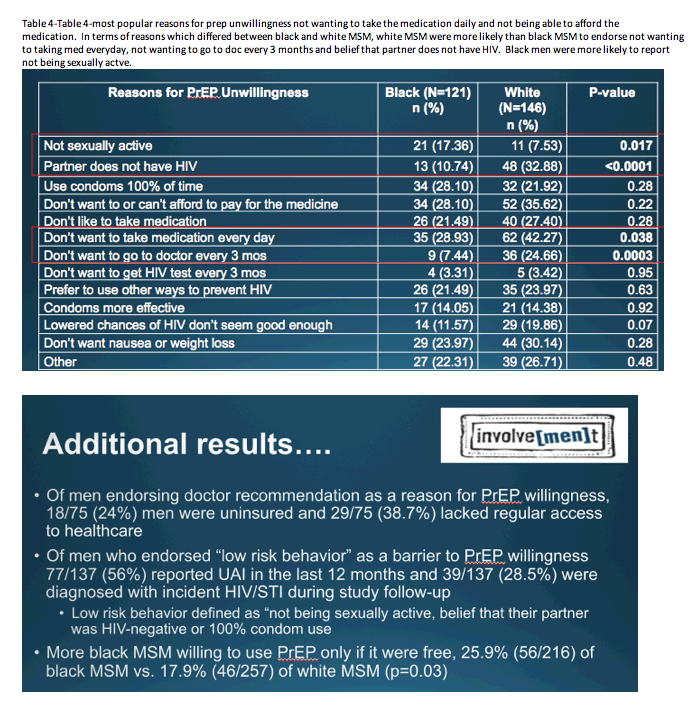
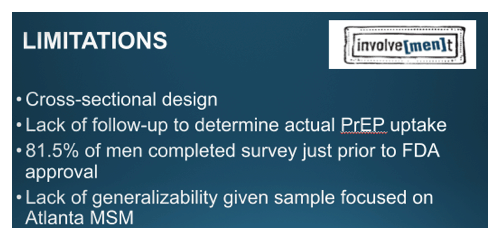
|
| |
|
 |
 |
|
|